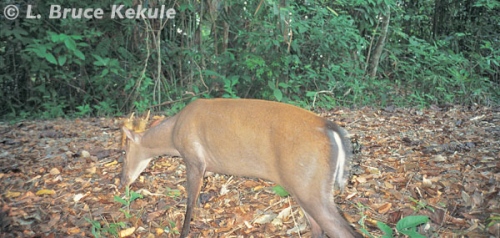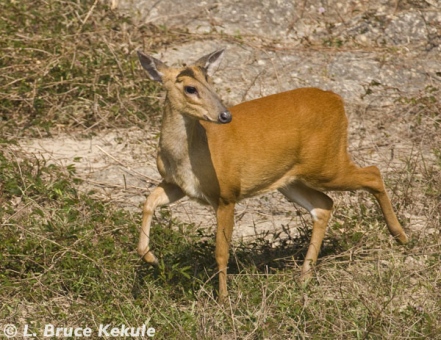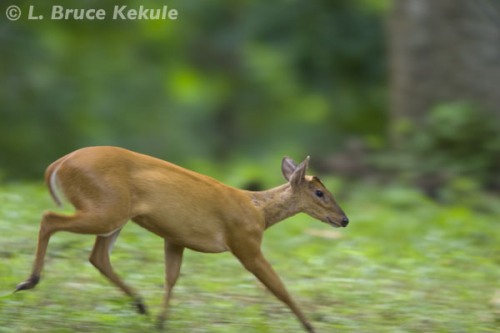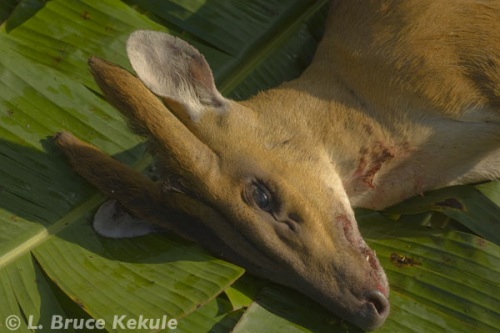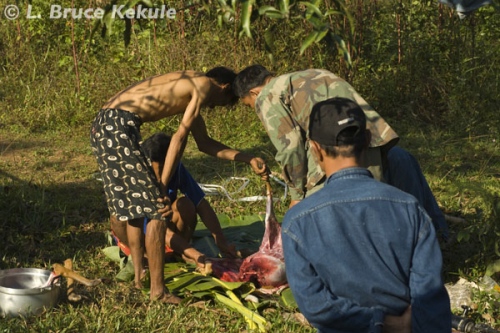
Sign Up or Log In
Gallery
Recent posts
- THAILAND’S NATURAL HERITAGE: A look at some of the rarest animals in the Kingdom – Part One
- WILDLIFE in THAILAND: A Photographic Portfolio of Thailand’s Natural Heritage – Part Three
- WILDLIFE in THAILAND: A Photographic Portfolio of Thailand’s Natural Heritage – Part Two
- WILDLIFE in THAILAND: A Photographic Portfolio of Thailand’s Natural Heritage – Part One
Archives
- May 2020
- April 2020
- November 2019
- April 2018
- March 2018
- February 2018
- August 2017
- July 2017
- May 2017
- April 2017
- March 2017
- January 2017
- November 2016
- August 2016
- June 2016
- May 2016
- April 2016
- March 2016
- February 2016
- January 2016
- December 2015
- November 2015
- October 2015
- September 2015
- July 2015
- June 2015
- May 2015
- April 2015
- March 2015
- February 2015
- January 2015
- December 2014
- October 2014
- September 2014
- August 2014
- July 2014
- June 2014
- May 2014
- April 2014
- March 2014
- February 2014
- January 2014
- December 2013
- November 2013
- October 2013
- September 2013
- August 2013
- July 2013
- June 2013
- May 2013
- April 2013
- March 2013
- February 2013
- January 2013
- December 2012
- November 2012
- October 2012
- September 2012
- August 2012
- June 2012
- May 2012
- April 2012
- March 2012
- February 2012
- January 2012
- November 2011
- October 2011
- September 2011
- August 2011
- July 2011
- June 2011
- May 2011
- March 2011
- February 2011
- December 2010
- November 2010
- October 2010
- September 2010
- August 2010
- July 2010
- June 2010
- May 2010
- April 2010
- March 2010
- February 2010
- January 2010
- December 2009
- November 2009
- October 2009
- September 2009
- July 2009
Links
Wildlife Links
Posts Tagged ‘cervid’
Muntjac: Thailand’s Barking Deer
Small cervidae and even-toed ungulate
Persecuted for the pot, muntjac still thrive in many protected areas around the Kingdom
Male muntjac in Khao Yai National Park
As the sun starts its daily ascent from the eastern horizon, the early morning air is crisp and cool. It is November and not a single cloud is seen in the clear blue sky. Heavy dew blankets everything in Mae Lao-Mae Sae, a wildlife sanctuary situated in the northern province of Chiang Mai northwest of the capital. Mist rises from the forest as the morning heat builds. Scent from pine trees, some hundreds of years old, is refreshing. A ‘sea of fog’ covers the lowland valleys and the view from the mountaintop is breathtaking.
Birds begin their incessant chirping, and a single gibbon calls from the interior. Butterflies cling to tree branches waiting for their wings to dry out, and other creatures of nature begin daily rituals. Life in this northern wilderness is pure as it has been for millions of years.
Fea’s muntjac male camera trapped in Kaeng Krachan
A huge granite massif sits in the sanctuary a couple kilometers from the main road. A pack of Asian wild dogs are zigzagging through the forest searching every nook and cranny for prey near the peak. They bump into a local resident muntjac male munching on fallen fruit.
The mature buck hears the dogs yelping and is instantly on high alert. Sounding much like a domestic dog, this small-sized deer emits a loud bark continuously until the threat is gone. The warning call is heard over many kilometers distance alerting all the other animals within audible range that a predator is on the prowl. This extremely fast cervid is now on the run weaving and darting through the forest. It escapes the slower dogs to live another day, and the pack carries on with the hunt.
Female muntjac on the run in Huai Kha Khaeng Wildlife Sanctuary
In another scenario, a lone leopard hunting for quarry gives chase to a female muntjac in Huai Kha Khaeng. The doe becomes confused and makes a wrong turn. In seconds, the big cat pulls the creature to the ground and goes in for the kill. But it is just another day in the balance of nature where the struggle for life and death between predator and prey is played out.
Muntjac, also known as “barking deer”, is a small deer of the genus Muntiacus with short antlers on the male joined on a very long pedicel or bony base. Females have no antlers. Both sexes have long canines, elongated in males and used for fighting for mates or for defense against predators. The males shed their antlers annually which re-grow through a phase called ‘velvet’.
Muntjac doe in Huai Kha Khaeng
They are the oldest known deer, appearing 15–35 million years ago, with fossil remains found in Miocene deposits in France, Germanyand Poland. The present-day species can be found from Sri Lanka to southern China, Taiwan, Japan (Boso Peninsula and Oshima Island), India and Indonesia. They are also found in the eastern Himalayas and throughout Indochina. There are twelve species of muntjac and they all show similar traits.
Two species of muntjac live in the forests of Thailand; the most common is the red muntjac found in many protected areas throughout the Kingdom, and the other anomaly is the very rare Feas’ muntjac still thriving in the West. Both species are similar in size and behavior, and remain solitary for most of the year except during breeding season. Muntjac feed on leaves, buds, seeds and twigs, as well as fallen fruit. They visit mineral deposits daily to supplement their diet like other even-toed ungulates including sambar, wild pig and gaur.
Muntjac buck in Khao Yai on the grassland
I have photographed barking deer on many occasions at just about every location I have ever visited over the last 15 years as a wildlife photographer. I have also camera trapped many. No matter how many images I have of muntjac, I still continue to shoot these delicate deer always looking for the better shot. Some of my best photographs have come from Khao Yai National Park as seen in the lead photo. My good friend Coke Smith recently managed to catch a female Fea’s muntjac in Kaeng Krachan National Park seen in the story. He was lucky as they are tough to see, let alone photograph.
Fea’s muntjac in Kaeng Krachan National Park
Unfortunately, both species of barking deer are taken for the pot. Their antlers even though small in comparison to sambar trophies are still collected. Poaching is a serious threat to muntjac and needs to be stamped out completely. However, this will more than likely be an on-going problem. The Fea’s muntjac status is ‘Near Threatened’ on IUCN’s list but the Red muntjac is not currently at risk though declining owing to excessive hunting and habitat loss.
Female barking deer on the run in Huai Kha Khaeng
Although some improvement has been made in forest protection by the Department of National Parks (DNP) poachers still continue to evade the rangers and stories pop-up in the newspapers, radio and TV all the time. Heavier fines and long jail time for law-breakers is the key. The DNP should up-grade protection with better enforcement, bigger budgets and more personnel needed in this important aspect of taking care of the Kingdom’s protected areas.
Muntjac doe in Huai Kha Khaeng
Hopefully, muntjac will be with us for sometime. However old policies like the treatment of the DNP’s temporary rangers (50 percent of staff) still plagues the department. No pay for months on end from October through the New Year due to a glitch in the system continues to harm the incentive of these tireless men who are the true protectors of the forest.
Male muntjac jumping a motorcycle in Khao Yai
Management is still lost on this most important issue and I say time and time again: fix this problem now so that Thailand’s wildlife and forests can at least have a chance of survival into the future. The ‘temporary’ hired ranger needs to be up-graded to ‘permanent status’ so he has all the benefits of the other 50 percent (permanent and government officials). It is the only way forward!
Red Muntjac – Muntiacus muntjak
Muntjac male in ‘velvet’ in Huai Kha Khaeng
Muntjac is the most numerous of all deer species in Thailand. Its unmistakable bark, which can be heard over long distances, is made when a predator has been detected. These small ungulates are mostly reddish brown to bright chestnut, with a dark brown face and legs. The underside of the tail is white, and when alarmed will flip up like a white flag.
Female on the run in Thung Yai Naresuan Wildlife Sanctuary
Only the male has antlers, which are short and joined to a long pedicle or bony base. The antlers are dark brown in color, about 10-15 centimeters in length, and with a short tine about five centimeters long. The females lack antlers and have small bony knobs with a tuft of black hair where the pedicle is on the male.
In some areas they are active during the day, but where heavily disturbed by hunting muntjac become nocturnal. The rut takes place in December and January. After six months of gestation, a single fawn is born. On rare occasions twins may be conceived. These deer are eagerly sought after for meat.
Fea’s Muntjac – Muntiacus feae
Fea’s muntjac female in Kaeng Krachan
Fea’s Muntjac are now considered very rare and survive only in the Tenassarim Mountain range from Umphang Wildlife Sanctuary near the Burmese border in the West, all the way down to Pha Nga in the South.
These delicate creatures have a dark brown coat with a black ringed uppertail and white undertail. The antlers of the male are yellowish and small compared to the common red muntjac, but behavior of the two species is the same.
Fea’s live only in pristine evergreen like in Kaeng Krachan National Park in Phetchaburi province and Thung Yai Naresuan Wildlife Sanctuary. Their range in Southeast Asia is very small.
Notes from the field
Male muntjac dead in the Western Forest Complex
A sad day from December 2000, while working in a protected area within the Western Forest Complex, is etched in my memory. A local hunter killed a muntjac in the forest behind his village. It was a young buck and the villagers were ecstatic; fresh meat is always welcome. The men eagerly carved up the carcass. None of the deer meat was sold but shared with the rest of the village. This is called “subsistence hunting” as practised in community forests in Thailand.
But muntjac is protected and these people had just committed a crime. Who was going to turn them in? As a guest of the house, I took a few photographs but kept my mouth shut, knowing that a step in the wrong direction would alienate these people. Rural Thailand can be a tough place sometimes, and after more than three decades of living here at the time, I felt silent discretion was the best option.
Muntjac being carved-up in a protected area in the West
The biggest problem with community forests is poor or no enforcement at all. Local villagers and hill-tribe people take animals from the forest for self-consumption, or for sale. It is hard to blame them when they live off the land, maybe as their forefathers did or out of necessity, because they are poor and scratch out a meagre living.
Modern life influences people. Many have increased desires relating to modern living habits: new homes, cars and pickup trucks, televisions, mobile phones, computers and video games, etc. The list of consumer items that people want is big and many struggle with debt. Living off the land is free for the taking, so why not take advantage of it? But small and large ecosystems are struggling to survive as humans take all and leave little.
The problems and dangers of the ‘Community Forest Bill’ are quite simple. Just one example: Close to a protected area in Uthai Thani province, a school was responsible for a small patch of forest under the Community Forest Bill. This forest had barking deer, wild pigs, jungle fowl and other small creatures. The teachers and students faced gun muzzles when villagers from afar, who had already depleted their own forests, came to hunt and gather.
Nobody could stop them. Unfortunately, shortly after this incident, wildlife in the small forest was completely wiped out by a few selfish people. The school project, planned to instil conservation awareness among local children and people, failed to even get off the ground. This is a sad fact of life if “firepower” is allowed to dictate who does what, and the consequences were devastating for the school.
Most community forests outside protected areas are virtual islands protected by local communities, rather than the central government. Some are adjacent to protected areas and have unmarked boundaries. Now that the bill has been passed, most people living in national parks and wildlife sanctuaries can take what they want from the forest if they “misinterpret” the law.
Some people and NGOs fiercely contest the ideology behind it. There are some successful programs in which people responsible for a local forest truly protect it from outsiders, but these are few and far between. The road to extinction for many species will undoubtedly speed up. All humans have a right to exist, but unfortunately, not at the expense of the natural world.
Saving a species like muntjac from extinction should be a top priority of the DNP. Other ungulates like goral, serow, wild pig and banteng should be reintroduced into protected areas where they once thrived. Some may argue against reintroduction, but as we lose more and more species, release is the only practical way to save Thailand’s rare creatures from extinction in the wild.


